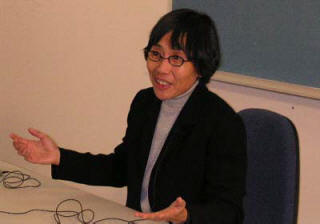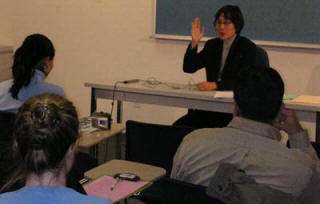
Within the field of psychology, immigrants are often overlooked when it comes to assessing mental health. The Asian immigrant population in particular is a group that has gone through a lot of losses, including having to leave their home country, friends and family. Even though there are good reasons for traveling so far, there’s still a period of loss, and if left unresolved, could lead to depression and anxiety.
Assessment
Depression comes in varying degrees. Mild depression is consistent and goes on for a long period of time. There is also depression with psychotic features, which include having delusions, imagining and hearing things.
Recent research studies indicate that immigrants, especially Asians, tend to suffer from depression and anxiety. Yet some immigrants only display certain symptoms of depression, and under the DSM IV (diagnostic manual with list of criteria for determining depression and anxiety), to be clinically diagnosed as depressed is difficult to say. Assessment really depends upon who is doing it, and how it’s being done.
Each culture has a different set of values as to how one is to behave, think and feel. One country’s depression may not be another’s. Within the Asian culture, working hard is a prominent value, while having fun is less important. Thus, a person’s self worth is tied to work, and family approval becomes very crucial. Depression within the Asian culture isn’t even recognized, which leads to the need for culturally relevant ways of looking at mental illness, and more thorough assessments, in order to classify Asians as depressed.
Causes for depression include having a lot of negative thoughts and not liking yourself, sometimes even to the point of hurting or killing yourself. There is a general sense of hopelessness, a lack of control over life. Immigrants have to deal with racism, discrimination and poverty, which could all very easily lead to a sense of having no control, and put them at risk for depression and anxiety.
Psychodynamics Factor – According to Sigmund Freud, aggression is turned inward during depression onto oneself, taking the blame for things you have no control over.
Asian Culture Factor – Responsibility is put onto oneself, and if things don’t happen the way they should, you take the blame for it.
Thus, the culture itself sanctions this internalization of aggression. There is something positive about that though, because we own our own responsibilities, but if we let it go too far, you stand the risk of taking on the blame for everything that doesn’t work out in your life. What one does with disappointment is a key issue. Some people will externalize the problem, blaming everyone else, or internalize the problem and blame themselves. The Asian culture pushes people to work harder, leading to more of a tendency to internalize their problems. There are already two strikes against immigrants, their cultural tendency to internalize their problems, and reality, having to overcome obstacles and the loss of control over their lives.

Clearly there are differences between the Western and Asian take on depression. In the Western model, people with depression don’t work, want to be left alone, and don’t want to go out or be productive. Asians on the other hand, though depressed, still manage to go out and work, becoming an important aspect of one’s identity. Since childhood, Asians have been taught to work, providing a structure and purpose in life, as well becoming a defense mechanism, distracting them their problems. The American culture values emotions, while the Asian culture tends to shy away it. The idea that as long as you do your work and not think about it, everything will be all right, works only to a certain extent.
There also lies another extreme, in which they actually want to talk about their problems. A person’s feelings are learned, traceable back to their childhood, whether it was good or bad. Feelings can also be induced by one’s cultural background, growing up thinking certain things were very important, and if they don’t have those things, might lead to anxiety. Easily more agitated from keeping their feelings in for too long; Asians often take it out on their children or spouse.
Treatment
There are several options for treatment including medication, talk therapy/counseling and group therapy. Within the Asian culture counseling isn’t favored because it costs money, and the results aren’t immediately seen, leading them to think that perhaps their problems can be self managed.
Changes have to be made to the perception that Asians are not interested in talk therapy. Even though the issue of mental health is embarrassing to Asians, it is up to the mental health profession to reframe and engage them. There needs to be more creative way in how services are offered and how to reach out to those who are embarrassed. Today, the Asian culture itself is going through changes with the influx of immigrants since 1970, creating a New York City culture of working women, a fading patriarch structure, domestic violence and generation clashes. As long people don’t have to pay, they’re willing to talk. When the issue of money comes up, the traditional side of that person appears.

Talk therapy works, but has to be modified in culturally relevant ways. The Narrative Approach lets a person just tell their stories, and helps point out their strengths. By utilizing the strength perspective, it helps to rebuild a person’s self-esteem of who they were before coming to this country. Some people suffer from panic attacks, an extreme form of anxiety disorder, usually accompanied by hyperventilation and feeling sick. Most go on medication, but end up feeling immobilized, which is why talk therapy is choice option.
By talking to an individual and uncovering the real person underneath their current exterior, more progress can be made by encouraging a person to do more with their lives. Showing an interest in a person’s history will make them feel like a person again, and create meaning in their lives, rekindling their hopes. Thus, an easy way for people to get into therapy is by asking for their information and stories.
Yet, therein lays the difference between the Western approaches of engaging an individual versus the Asian approach, whereby the West dictates that an objective stance be undertaken between the professional and the client. Within the Asian model, such an approach cannot be taken, because the client will want to know who the individual they are talking to is, in order to build trust. A good clinical practice would be to answer any personal questions the patient may have about them, so long as it doesn’t interfere with their relationship. Asian patients like getting advice, which makes them unsuitable candidates for psychotherapy. A possible option would be to offer clients some advice, but not set up any expectations, allowing them different courses of actions, and still maintain a culturally appropriate treatment.

If the belief that Asians don’t believe in counseling continues to persist, then there won’t be any progress made. The need for more culturally sensitive approaches to mental health assessment and treatment among Asian immigrants becomes a real important issue.
Synopsis by Antony Wong

